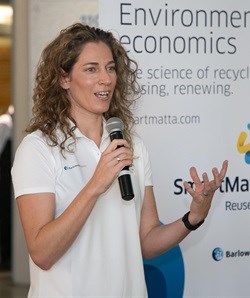
Subscribe & Follow
Advertise your job vacancies
Awareness of the value of waste is growing
Within many companies around the world, there is a growing understanding and awareness of the value of waste. Instead of a mere hassle, waste is being viewed as an important resource - particularly among the larger and more established corporates.

Indeed, the shift from considering waste management as a cost saving exercise to a value-add to the bottom line is slowly infiltrating strategic business thinking worldwide.
This new approach requires ‘re-thinking’ waste as an integral component of a corporate supply chain. As research has shown, it’s a positive development cycle that preserves and enhances natural capital, optimises resource yields and minimises system risks. It is often referred to nowadays as a ‘circular economy’ and closed loop approach, which optimises value throughout the life cycle of products. Business leaders need to apply circular design thinking in order to truly leverage and benefit from this previously undermined resource.
The application of circular design thinking to waste management operations (and subsequently and consequently to various areas within the supply chain) has the potential to add various values and long-term business advantages. These include financial benefits, better information and reporting, increased competitiveness and brand protection - to name a few. Importantly, this approach also enhances customer loyalty in the long-term and strengthens company identity.
Zero waste to landfill
In addition, the target of zero waste to landfill has prompted rapid development in waste minimisation and beneficiation technologies - and subsequent achievements in waste reduction targets are reported in annual performances and sustainability reports.
However, despite all the progress made to reduce waste and its impact on the environment along the value chain of some businesses, waste management is still predominately implemented operationally as a separate leg in the supply chain.
This is problematic because procurement strategies do not look through the entire cost of a product. For example, marketing often decides on a specific packaging material for the product but doesn’t necessarily evaluate its recyclability - so the packaging ultimately ends up costing the company more in terms of disposal during production runs and at general consumer disposal.
Also, sustainability is sometimes not involved in - or integrated with - the operational elements of a business, which creates a misalignment of objectives and inefficiencies across the business. Essentially, there is a general misunderstanding of the ability to really create an environmentally economic solution (and viable commercial opportunity) for a business.
Decrease in carbon emissions
In our view, a systems approach provides benefits in the reduction of transport costs, generation of added value through waste handling optimisation, and integration of infrastructure. Together, these benefits translate into a decrease in energy consumption and subsequently carbon emissions.
In order to create shared value for all stakeholders, the target of zero waste must be incorporated in the design and implementation of the supply chain strategy. A clear understanding of the technology and operational requirements to deviate waste from landfill must be clearly unpacked, and form part of the design of the closed loop supply chain.
For companies, the first step is to assess the waste and where it sits in the value chain. They must also understand what it is made up of, the volume of waste and what is creating it. Secondly, companies must understand what the baseline looks like - and create a baseline of waste off of which to measure future improvements. Then, set clear goals from a sustainability and efficiency perspective to reduce waste across the value chain.
Leaders should also identify key stakeholders in the value chain and collaborate with them to reduce waste where appropriate. Today, there are a variety of powerful technology platforms and tools available to model supply chains, manage waste, track it, and measure the commercial impact in both the short and long-term.









